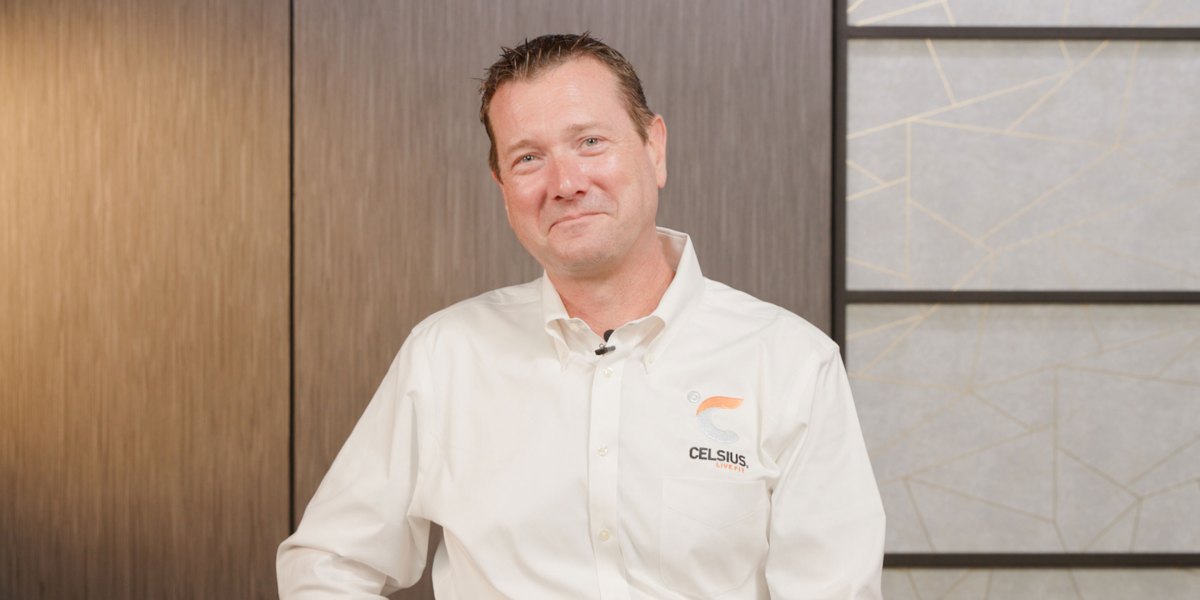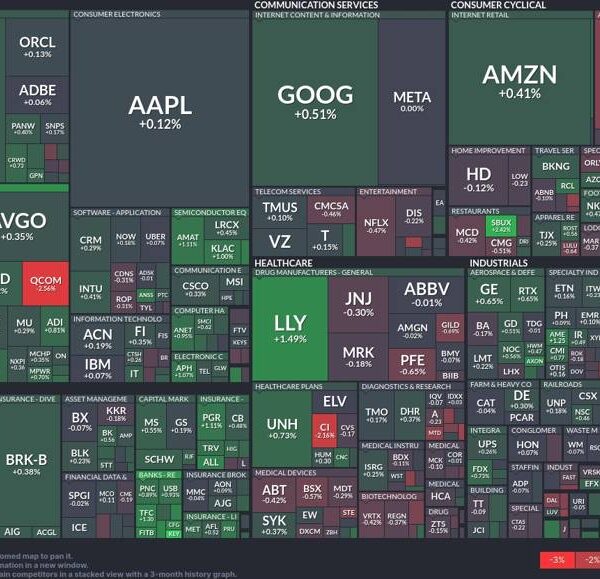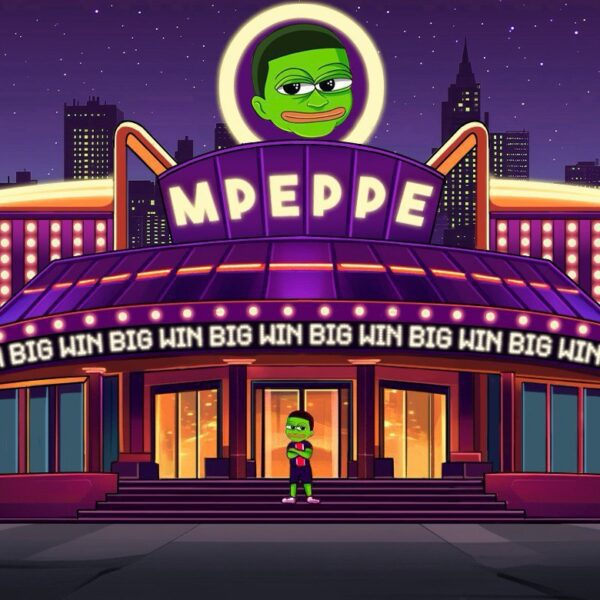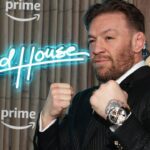

John Fieldly, 44, is revved up.
The CPA-turned-energy-drink evangelist is the president, CEO, and chairman of Celsius Holdings, the ubiquitous energy drink known for its proclaimed calorie-burning abilities—up to 140 calories per bottle consumed, the company claims. If that weren’t enough to endear itself to gym rats, it also comes in over 30 zany flavors like kiwi-guava.
If you ask Fieldly, who joined the company amid its turnaround efforts in 2012 as its CFO, Celsius was “born in gyms and health clubs” and is today now positioned for broad, mass appeal—especially among today’s “health-minded consumers.” (Which is to say—pretty much everyone.)
Fieldly, who graduated college via night classes and daytime work at a drug manufacturer, worked as a CPA before making the leap. At the time, Celsius was in dire straits. It had listed, then delisted, on NASDAQ, its products were removed from shelves, and investors considered it to be a penny stock.
Fieldly, at the time, thought his days—and those of the company—were numbered. But those 12 employees back in 2012 have become nearly 800. The business has doubled in size over just the past year-and-a-half. And that stock price? Over the past five years, shares are up 6,290%.
In an interview with Fortune, the brand’s CEO reveals his own origin story, the energy drink’s comeback, his secrets to success, and where he sees the ubiquitous beverage going next.
The following transcript has been lightly condensed and edited for clarity.
What’s your background?
I was born in Newburgh, New York, but really grew up north of Tampa, Florida, in a town called Pasco County. I always aspired to work for a public company. I remember coming down to Manhattan with my grandmother to go to the New York Stock Exchange. I was fascinated by Wall Street, and in high school and college, I wanted to be involved in finance. So I got my CPA license, and actually got a job as a staff accountant. That was at a company based up here on Park Avenue called Lebhar-Friedman, in the B2B publishing industry.
I got to learn about B2B publishing, events and periodicals, and really the finances behind that—as well as production and sales. I briefly worked for a publicly traded biotech company; that’s when I had the opportunity to really work on some SEC filings, which I was really excited about.
I joined Celsius over 13 years ago, back in 2012, and it’s been an amazing journey. I started off as their CFO, part of our original turnaround team.
What was your very first job?
When I was 13, I tried to start a lawn-mowing business, because in Florida, grass grows like crazy. It was not successful. So my first job was at a carwash at 14, trying to save money to buy my first car. I still enjoy washing cars today; it’s part of my relaxation.
But probably the biggest education I got that still benefits me today came from my eight years working at Eckerd Drugs. I started off in customer service and worked my way up to assistant manager. That experience really benefits me at Celsius, as well really helping me understand the path to purchase with shoppers.
At Eckerd, I was part of a turnaround team that helped rebuild underperforming stores. I did that all through college while I was attending the University of South Florida. That taught me a lot about consumers, their purchasing patterns, how to upsell at retail, demographics, and making sure you have the right product in the right store—as well as learning how to deal with people.
That’s one thing, even today, when we’re hiring employees at Celsius—we’re getting close to 800 employees these days—we look for retail experience on résumés.
At first, when I was at USF, I was in night school, because I worked during the day. I originally had an accounting professor, when I took accounting during the summer, who always came to class in Jimmy Buffett T-shirts and shorts. He said he was towing a boat in his backyard to go fishing right after class. He did taxes down in Miami, taught at USF part-time, and then went fishing every day. Going through that class was quite interesting; he made accounting seem like a really good job, and he was really relaxed.
That got me more interested in getting my CPA license. I am a CPA, and I’ve never worked fewer than 60 hours a week. So it’s a little bit different from the way he explained it. But I really enjoyed my time at USF. I enjoy finance, I really treat financial numbers as a different language. So that’s one thing I did at Celsius as CFO, and even do today as the CEO: translating the financials and commercial actions to really drive the teams forward, and it’s worked really well.
I was working at Lebhar-Friedman during probably the one of the worst recessions in some time. We were really working on restructuring the teams, because our advertising revenue got cut in half. That was really interesting—working with the financials and commercial teams to restructure and optimize. That’s one thing that really gets me excited.
How many hours would you say you work a week?
I don’t know. It never ends. I try to take the weekends off with my family on Sundays. But right now, Celsius is really a global business, so you’re kind of always on. Even when I was in college, I did the same. When you commit yourself, you’ve got to really, fully commit yourself. So I guess that’s in my DNA.
Would you recommend people work while they’re in school?
I think you’ve got to do what you’ve got to do.
Tell us about the origins of Celsius.
It was born in South Florida. It was created by scientists in the sports-nutrition industry. And what’s interesting—I didn’t know this until I started at Celsius—but Boca Raton, in South Florida, not only has an IBM research facility where the first PC was created, but it’s also the birthplace of sports nutrition. Rexall Sundown, the first multivitamin company, was headquartered there. GNC has a research department down there, creating their sports-nutrition products. Herbalife is down there. Some of the largest sports-nutrition companies are located in South Florida.
So the people behind Celsius wanted to create a thermogenic beverage. At the time, there were tablets that created a negative-calorie effect. Celsius was originally created as the world’s only negative-calorie drink. It’s clinically proven to burn 100 to 140 calories. There’s science behind the product—over six clinical studies. That’s really the foundation.
Unfortunately, after Celsius was launched nationwide, Coke and Nestlé tried to copy it, and created a product called Enviga. But it didn’t work. Celsius publicly listed on NASDAQ [in 2010], and basically got delisted out of the country [in 2011 because it] just didn’t connect with consumers. That’s when I showed up, in 2012.
I was really part of a turnaround story here. The original investor tried to sell the business, but couldn’t find any buyers. All their investors lost their money in the company. One thing the main investor wanted to do was make everyone whole again. That was the main thesis.
I was introduced to the company by a gentleman called Gerry David. I worked with him at a biotech company called Oragenics. He joined Celsius as the original turnaround CEO, and he wanted me to join him on the journey as his CFO. The goal was to get the company back listed on NASDAQ, it was an OTC Pink Sheet company—more of a penny stock, really. The goal was to get it back on NASDAQ and to make all investors whole.
When Gerry started, we basically got delisted out of all the retailers. It was a really troubled time. I probably only thought I had another six months or a year left at the company. It was really troubling. We were asking investors for payroll for the small team. But we were all fully committed; we knew we had a great product.
Celsius had great reviews, even in the early days, and we started consuming the product ourselves. It’s a really great energy drink; you don’t feel any jitters or crashes. It’s a nice elevation, and the product actually works. It’s thermogenic. We knew we had something; we knew health and wellness trends would continue to grow. It was just trying to find our niche in the industry, and being able to scale and grow the business.
When I started, we had about 12 employees—a really small group. We’re now getting close to 800. It’s just amazing. We’ve doubled the size of the business in the last 18 months.
When you look back at that period, what was the number one area where Celsius had to improve?
Everything, really. One area we needed to focus on was to not go broad and wide—we needed to get super hyper-focused. That’s one thing we really did as a team and as a company. We tried to target a consumer and create loyalty. Really, when you have a consumer product, you need to be part of a daily lifestyle and daily routine. So one thing we did was really try to understand who’s drinking Celsius, and why. And then: How do we really build upon that to create a foundation?
I remember, probably back in 2013, in one of our meetings, the goal was to fill a stadium up with daily consumers, which was about, at the time, a small stadium. 35,000 daily consumers. Almost half of the standard NFL stadium we wanted to fill with daily consumers. That would make the company profitable. So that was a big goal we had internally.
Tell us more about your turnaround strategy and headcount growth.
It’s very difficult to recreate the Celsius story. It really started to turn around after COVID. When you look at the timeline, prior to 2020, the company was growing, probably around like 30% to 40%, which is great. But we really saw an uptick in sales during the pandemic. And that’s really when we changed the strategy from being more scientific, to really being a fitness and lifestyle brand.
The liquid has to be more than the ingredients in the can. We really wanted Celsius to stand for a global iconic brand. We want Celsius to be like the Apple logo, or Starbucks logo, or the iconic Monster Energy claw. The turning point was really focusing on the overall brand and this fitness lifestyle that’s really been able to connect with a broader consumer than ever before, versus when we were really going after more diet and sports nutrition angles.
We took the brand and really made it mainstream, and it’s taken off. We’ve done a variety of different tactics and marketing strategies. And it’s worked. Sampling has been really critical because we knew we had a great product but we needed sampling in the right locations. So we focused on first responders, nurses, firefighters, and police officers. We focused on social media through a variety of different influencers and platforms, from Snapchat and Instagram to TikTok. But we’re still focusing on our core and fitness. We partner with Barry’s Bootcamp and Gold’s Gym and 24-Hour Fitness, but we’re really positioning the company for a broad lifestyle position.
How much success comes from branding versus what’s in the can?
It’s really hard to differentiate. I think it has to go both ways. You’ve got to have a great product that works. But then you also have to have that branding that connects with the consumer in a broader way.
Consider Nike. The sneaker industry is really a commodity. But the value that people see within the Nike sneaker really shows you the value of the brand. Nike makes great sneakers, but they also have an amazing brand. They couldn’t be that iconic without connecting with consumers in an emotional way. That’s one thing we learned: We really need to connect with consumers in an emotional way to really resonate and create that daily loyalty and be more than the liquid in the can.
How did you transition from CFO to CEO?
I transitioned from CFO to CEO in 2018. Gerry wound up retiring; I think the stress of travel and running a public company took a toll on him. So actually, for about a year and a half, I was the CFO and the CEO. And we actually uplisted to NASDAQ while I was doing both roles. The company was looking for a CEO at the time. They actually went through a variety of interviews. I was, I guess, younger than who they were looking for at the time, but for the hard work, drive and passion, I really rallied around the team and continued to grow the business.
After the third attempt at a hire, I told Gerry I wanted in on the interview process, and I could run this company. So I got in the interview process. And I wandered over to CEO in 2018, officially, and I backfilled the CFO role.
Sounds like you pitched yourself. What did you say?
I think you’ve always got to be selling yourself, each and every day. Performance matters, right? Performance, drive, passion, execution. Look at what was accomplished over a year and a half—it was pretty much flawless execution. You couldn’t deny what was built when I was CEO and CFO. Uplisted in NASDAQ. Made all the investors whole, on the original thesis that I joined the company on. And I knew I could take this company even further.
They gave me the opportunity, so here we are today, over a 10% share of the energy-drink category. Actually, we just released earnings last quarter, and at 11.5% a share and growing. And the company couldn’t be better-positioned, especially with today’s health and wellness trends. And one day, we’re going to be the number-one energy drink in the world.
I took the job at Celsius as the CFO really to work with Gerry David, who brought me on. I had a small family over in Tampa. I had a daughter. It was risky to get a job as a CFO when I was 32 years old. It’s very difficult for a public company. I say to my children all the time: There’s forks in the road. Every decision you make brings you to another fork, I had an opportunity to get the job, and be a CFO of a publicly traded company, although small, micro-cap, I had to go for it. Those opportunities only come once in a blue moon. My favorite quote is from Abraham Lincoln: Things may come to those who wait, but only those things left by those who hustle. The opportunity was there. I had to jump on it.
How would you say you “turned Celsius around”?
I was really focused on a disciplined approach. We continued to focus on core markets, financials, and our activation tactics. We control dollars and execution based on targeted consumer tactics in communities we’re looking to activate.
It’s a disciplined financial approach. We’ve been profitable since 2015. We have always focused on financial discipline. It’s really difficult, in the beverage industry, to find success. There are over 1,000 new beverages that come to market every year. Fewer than 10% will make it to $100,000 in sales, and then maybe 10% of those will make it to a million dollars in sales. To get a brand to do a billion dollars in sales is nearly impossible. And that’s something we achieved in 2023 which is just astonishing.
When I took over Celsius as the CEO, we did $36 million in total revenue for the year. And just now in 2023, we did $1.3 billion.
What did your CEO job interview look like?
I did a whole presentation and had a whole PowerPoint. They really didn’t have too many questions for me, to be honest with you, because they knew me. I was in there every quarter doing presentations. They knew the passion, they knew the drive, they weren’t gonna find anyone that was more passionate than me.
I think passion is so critical. You can really see when an individual wants to win, and I think they knew that. In my presentation, I talked about the consumer, the targeted consumer, and how we’re going to tactically approach them to create daily loyalty, and connect with them throughout their daily lifestyle. When you’re building a consumer product, you need to be part of a daily routine. And when you think about it, we’re really all consumers, and we’re all on a track. We go to the same grocery store, the same gym, maybe even the same restaurant once or twice a week.
Saying ‘I need to get you to pull off on exit 22—when you never pull off on exit 22—to try a new product’ is extremely difficult, so you really have to have that mindset. When you think about the average consumer, how many new products do they try, or have they tried in the last week? I asked that question all the time, and most people say they haven’t tried any new products. Then, when you find that one that actually says they tried a new product, or even tried a new product in the last month, ask them if they repurchased it—that’s even rarer. So it’s really difficult.
You really have to have a tactical approach to be part of a daily lifestyle and daily routine. And that’s the way you’re going to build a really amazing, iconic brand.
What in particular during the pandemic made the brand flourish?
During COVID, we really wanted to support the communities that supported us. We’re a really big part of the daily lifestyles of trainers, all around the country. During COVID, all the gyms were closed, so if you were a trainer, you didn’t have any money. We started the Zoom workouts later on, and once we figured out how to do that, trainers didn’t really have a social presence. So we used our social platforms on Instagram and did Workout Wednesdays and Workout Fridays, where we would invite trainers from some of our gyms that sold Celsius, and we’d have them on for a workout and put money behind them and advertise them. We’ve really helped a lot of trainers expand their social reach. We taught them a variety of different social tactics as well. And that kickstarted their careers, too. I think connecting with those consumers in a really emotional way helped out our pickups.
Instacart is also a great platform, with all these home deliveries. One thing we did, even before COVID, was partner with Instacart. And we actually were on a beta test during March 2020. We were one of the first products to actually sponsor the beverage aisle on Instacart. We were trying to be a first-mover advantage. When you think about it, it’s an omni world. Consumers want it when they want it, how they want it. So we marketed heavily on a lot of these delivery apps.
I think we got people thinking about fitness, living fit, living healthy, living life to the fullest. And then during COVID where basically, if you weren’t thinking about fitness and thinking about what you were putting in your body—if you watch the news—you’re pretty much going to die. So I think that helped us out. We’re all about health and wellness and fitness, and Celsius is all about living fit.
Then a year later, Pepsi took a $550 million stake in Celsius. How did that change your strategy?
Quite frankly, it was a little bit nerve-wracking and scary, because we’ve had an extremely disciplined approach. We were focusing on core markets: New York City, Miami, Tampa, Boston, Southern California, LA, Dallas. We were very tactical in our approach to these markets.
And when Pepsi invested in us, it was a great day, because we knew we would be able to compete with Red Bull and Monster. Because—one thing with the beverage industry—it’s very difficult to get products on the shelf. It’s like the chicken or the egg: You have to get a consumer that pools the product, but then you can’t get the product on the shelf, because you don’t have a distributor, and a distributor won’t take you unless you have a consumer pool. So that’s a whole other difficulty of being in the beverage industry.
But when Pepsi invested in us, it was a great day, but also a nervous day, because that means that the company needed to think about a national launch. And if you recall, I came here as part of a turnaround story, because the original team launched it as a national launch, which unfortunately didn’t work. But they had great strategies, they just didn’t resonate with consumers. So that was a little bit concerning that we were doing it again on a national launch.
But we’re taking our tactical approach, and we’ve expanded to more markets. It’s the best thing for the company, and the partnership with Pepsi couldn’t be stronger. If you think about 800 Celsius employees, just think of all the Pepsi employees we have nationwide right now helping us sell Celsius and keeping it in stock. We wouldn’t be here, as successful as we are today, without Pepsi.
You mentioned Monster and Red Bull. Which brands would you say are your biggest competitors?
Pre-Pepsi, we really wanted to be the number-one energy drink. But what’s interesting, with the broad distribution of Pepsi, is that we’ve now expanded into food service. We’re in some select Dunkin Donuts. We’re in Jersey Mike’s. Now we’re entering a variety of different food service opportunities, like colleges and universities. Over 12% of our Pepsi revenue is food service. So I think we’re going after the total beverage market now, with this great opportunity and new Celsius flavors.
We want to be the most refreshing beverage in the world. The teams do an amazing job leveraging that refreshing flavor profile. I think we’re really well-positioned to go after [the] total beverage [market].
If you were to sum it up in one sentence, what is Celsius’s secret to success?
Connecting with consumers in a meaningful way about living fit, living life to the fullest, and accomplishing your health and wellness goals. That’s been the DNA of the brand’s original thesis from the beginning. Today, with the health and wellness trends like they are, everyone wants better-for-you ingredients without sacrificing flavor. Consumers want more function in the foods they consume, and Celsius delivers on that. Fitness is hip, cool, sexy, premium, and connects with a broader consumer than ever before.
What is your big goal for Celsius? Do you want to be a Fortune 500 company?
Absolutely we want to be a Fortune 500 company; that would be amazing. In 2023, we achieved $1.3 billion in sales. The company has been growing rapidly; it’s just a matter of time. Our true targeted consumer these days is 18 to 24 years old. We really target college students—the next generation in the energy category. The latest data shows Celsius driving the category growth by over 47% today.
Should people under 18 not drink Celsius?
We don’t promote the product to anyone under 18. It’s got 200 milligrams of caffeine, which is less than a Starbucks coffee, or some of the coffee houses around here. But it’s for 18 to 24. And actually, we have a lot of older demographics that consume Celsius because of the ingredients—we have over seven essential vitamins.
Does it concern you at all that TikTok influencers are promoting these energy drinks to younger children?
Yeah, I mean, younger children shouldn’t be drinking energy drinks. We’re really marketed as a fitness beverage. So it’s more of a pre-workout. That’s where we’re rooted, in gyms and health clubs. I know there are a lot of energy drinks out there that are mixing it with candy flavors, like Skittles, and I don’t think that’s appropriate.
Do you drink Celsius every day?
I do drink Celsius every day. About two cans a day.
You’ve been with Celsius for 12 years, that means you’ve had about 9,000 cans in your lifetime. Does that number concern you?
Not at all. I still love the product. It’s really refreshing. Many more to come. My favorite flavor—I’ve got to go old school—is orange. Orange is one of the original flavors. It is phenomenal. But the teams have been coming out with some amazing flavors lately, like green apple cherry and sparkling fruit punch.
Part of the secret sauce of Celsius is our use of cross-functional teams. We bring all the team groups together with ideas. We asked our employees what flavor trends they’re seeing, and what flavors they’d like to see with Celsius. So that’s one thing we get the whole company involved in.
Our Tropical Vibe flavor, which is a phenomenal starfruit and pineapple, was thought of by one of our employees. We had a meeting planned just to talk about new flavors, and everyone had to come with ideas. Someone went for a walk the day before and stumbled upon a starfruit tree, so they brought the starfruit into the office for the meeting. And then we started strategizing what other flavors pair well with a starfruit. So that’s how we created Tropical Vibe.
Were there any flavors that didn’t make it out of the testing stages?
We launched flavors that we wound up discontinuing. We’ve tried a variety of different combinations and flavors. We tried a root beer flavor once, which doesn’t really go with the brand. We’ve tried all different ideas, and some of them we just do because employees like to come up with different flavors. So we’ll go ahead and make the prototype just for employees to try and have fun with it.












